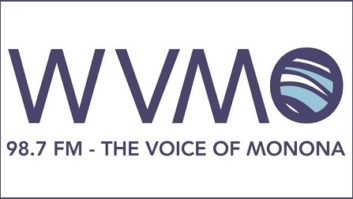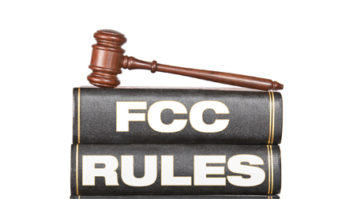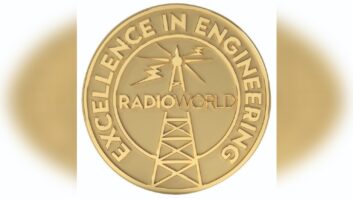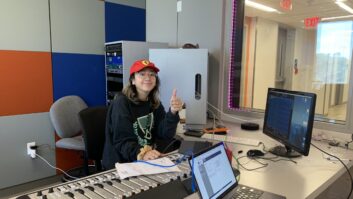In the Oct. 14 issue we looked at a number of important factors for selecting a new studio location or leasehold. This time, we’ll venture outside the normal realm of broadcast engineering to look at lease issues.
Why should the station engineer be involved in the lease negotiation process? After all, isn’t that the purview of general managers and owners?
While for the most part the lease process is the problem of the general manager and owner, there is much in the process about which you can and should have input, things both technical and non-technical.
By bringing insights and expertise to the table, you will only increase your value to the GM and owner.
LEASE TERM

Moving a radio station studio operation is a real pain. This differentiates a radio station studio lease from most regular office leases.
It’s no big deal to move desks, file cabinets and copy machines. Relocating studio cabinets, equipment racks, studio equipment and the infrastructure that ties it together — especially when you have to keep the station on the air during the move — is a very big deal.
Studio walls, doors, windows and ceilings must be treated for sound. Conduit must be run for the low-voltage wire carrying audio, control and Ethernet between studios and the engineering room. STL and satellite antennas must be installed and cables run. POTS lines, ISDN and T1 circuits must be relocated. And then you get to figure out how to keep the station on the air while you move all the equipment and studio cabinets!
It’s a lot of work to relocate a radio station studio operation. For that reason, the term of the lease takes on a whole new import. If the next move can be pushed out to five, seven or even 10 years, that pushes all that trouble and inconvenience out that many more years as well.
The term of a studio lease has implications for both the tenant and landlord. If rents go up in the market, the landlord will be stuck with a below-market rent on the space locked in for the term of the lease. Conversely, if rents go down in the market, the tenant will be stuck with above-market rent until the end of the lease term.
Also, if there is the possibility that the owner will sell the station, a long-term lease may be a big negative for the buyer, who may want to move the studio to his existing studio operation across town. So there are risks both ways.
One way to address this, at least for the tenant, is to provide “outs” under certain circumstances at specific points in the term.
For example, the landlord may agree to provide for termination of the lease at the tenant’s option in Year Five with 180 days notice. You may have to pay for this with an early termination fee, probably three months’ rent plus the balance of the unamortized build-out and lease expenses. If you believe that rents may go down at some point or if there is the real possibility that the station will be sold during the lease term, it may be worth it.
POSSESSION
It takes time to outfit existing or raw space for use as a radio station studio operation.
Soundproofed walls have to be built, infrastructure has to be installed and the offices have to be built out. It is more than a good idea to get a provision in the lease that allows for rent-free possession of the space for a period of time prior to the actual occupancy date — 60 or 90 days — for all this work to be done.
There simply is no way to build out and occupy a space as a studio operation in the same timeframe that a typical office tenant finish will take.
OPERATING EXPENSES
It’s typical for a lease to require a tenant to pay his proportionate share of the increase in the operating expenses of the building over a certain amount established in the base year, typically the first year of the lease.

It is a lot of trouble to move a radio station’s racks, studio cabinets, equipment and infrastructure. Sometimes this is spelled out in detail in the lease, but sometimes the language is vague. This can be a real “gotcha” if you’re not careful.
A lease may spell out a fixed amount of power usage per square foot — four watts per square foot, for example. Is that enough to take care of your office and studio use of the space? Probably not. Leases typically are structured for office use of the space, and four watts per square foot is probably fine for that. But throw in consoles, servers, workstations and all the other equipment, and you may find you’re a lot closer to six watts per square foot.
Leases often provide for a periodic audit of power usage and if the allowance is exceeded, the overage is billed at a premium. Pay close attention to this during the negotiation process. Ask if the allowance includes lighting (it usually does) and HVAC (it often does not). You may end up paying a higher rent for a higher power allowance, but that will likely be much less than the premium you pay for exceeding the allowance.
OPERATING HOURS
Office buildings often have specified hours of operation. That’s not just talking about when the doors are unlocked but also what hours the HVAC system operates. If your radio station operates 24 hours a day (or even 18), this is going to be an issue with which you’re going to have to deal in the lease negotiation.
Sometimes, building HVAC systems are zoned so that it can be operated at different hours in different parts of the building. Quite often, however, the whole building shuts down at 6 p.m. and there is no cooling to be had until 7 the next morning. In this case, you will have to make provisions for air conditioning your space outside those hours. One way to do this is with a separately metered auxiliary HVAC unit that services only the studio and engineering spaces.
Another consideration is how people will get into the building after hours.
Many employ a code lock or require a key card for after-hours access. Employees will be provided with a code or issued an access card, but how will your clients get in? Deal with this during lease negotiations with a provision for a video/audio intercom and some sort of remote door release, or if possible (such as in a ground-level suite), a separate entry for the radio station.
TENANT FINISH
As a rule, the costs to build out a space for occupancy by a tenant are paid by the landlord and amortized over the term of the lease and incorporated into the rent.
The more extensive the buildout and the shorter the lease term, the higher the rent will be. Soundproof walls, windows and doors and all the electrical and mechanical work to build out a studio cost a lot of money. This quickly can run up an otherwise reasonable base rent to a level that the station’s cash flow cannot support.
One way to deal with this is for the tenant to fund the tenant finish himself or borrow the money from a lending institution at an attractive interest rate. Even if the money is borrowed, it is almost certain to be at a much lower rate than what the landlord would offer by way of amortization. Funding the tenant finish gives you more control over the construction as well, allowing you to hire the contractor of your choice (subject to landlord approval, of course). It is likely that the landlord will require you to use his subs for tie-ins to the building’s mechanical and electrical systems, so be prepared for that.
ROOFTOP ACCESS

Be sure to allow plenty of time for the tenant finish. Don’t assume that a lease for office/studio space will grant you rooftop access for your STL, RPU and receiving antennas — it generally does not. Rooftop access must be negotiated separately, and there will usually be a charge for it depending on what you intend to do up there.
Rooftops can run the gamut from simple flat membranes to complex multi-level structures complete with elevator penthouses, cooling towers and provisions for antenna mounting. What you do in terms of the lease depends to a large degree on how the roof is set up.
A simple roof with no antennas can often be dealt with simply, perhaps with a sentence or two in the body of the lease providing the tenant access to a certain number of square feet in a certain corner of the roof for mounting a fixed number of antennas of a specified size. A rooftop at the other end of the spectrum, one that is already outfitted with antenna mounts and that likely has other RF tenants in place, likely will be much more restrictive, spelling out in great detail what size and type of antennas you will install where, and there will also likely be verbiage dealing with interference as well.
You can work with either one and just about anything in between. The important thing is to think carefully through what will be needed on the roof and make sure the lease provides for that. Don’t go overboard, because this can be off-putting to landlords of smaller buildings who might start to wonder what impact your rooftop antenna farm will have on his building and other tenants. It can and likely will impact your rent. If you can negotiate some excess capacity for little or no additional cost, that’s good; but be careful not to go too far.
Interference language can be important, especially if your STL de-senses a 930 MHz link receiver for a paging service operating from the rooftop. You could find yourself shut down while you order and install a set of custom pass/reject filters for that other rooftop user.
On the other hand, you might find your RPU or ICR unusable due to interference from a land mobile or wireless transmitter on the roof. Interference language swings both ways, so be careful to look at it from both perspectives. And make sure that the lease clearly states that future rooftop leases will include similar interference language.
You can leave the rest of the lease to the GM or owner, stuff like base rent, escalation, floor factor, common area maintenance and the like. But you should have input on the few key items listed above. At the end of the process, you hope to end up with a tenant-friendly lease at a location that will serve well as home for your station or cluster.
Cris Alexander is director of engineering at Crawford Broadcasting Company, a longtime RW contributor and a past recipient of the SBE’s Broadcast Engineer of the Year Award.












